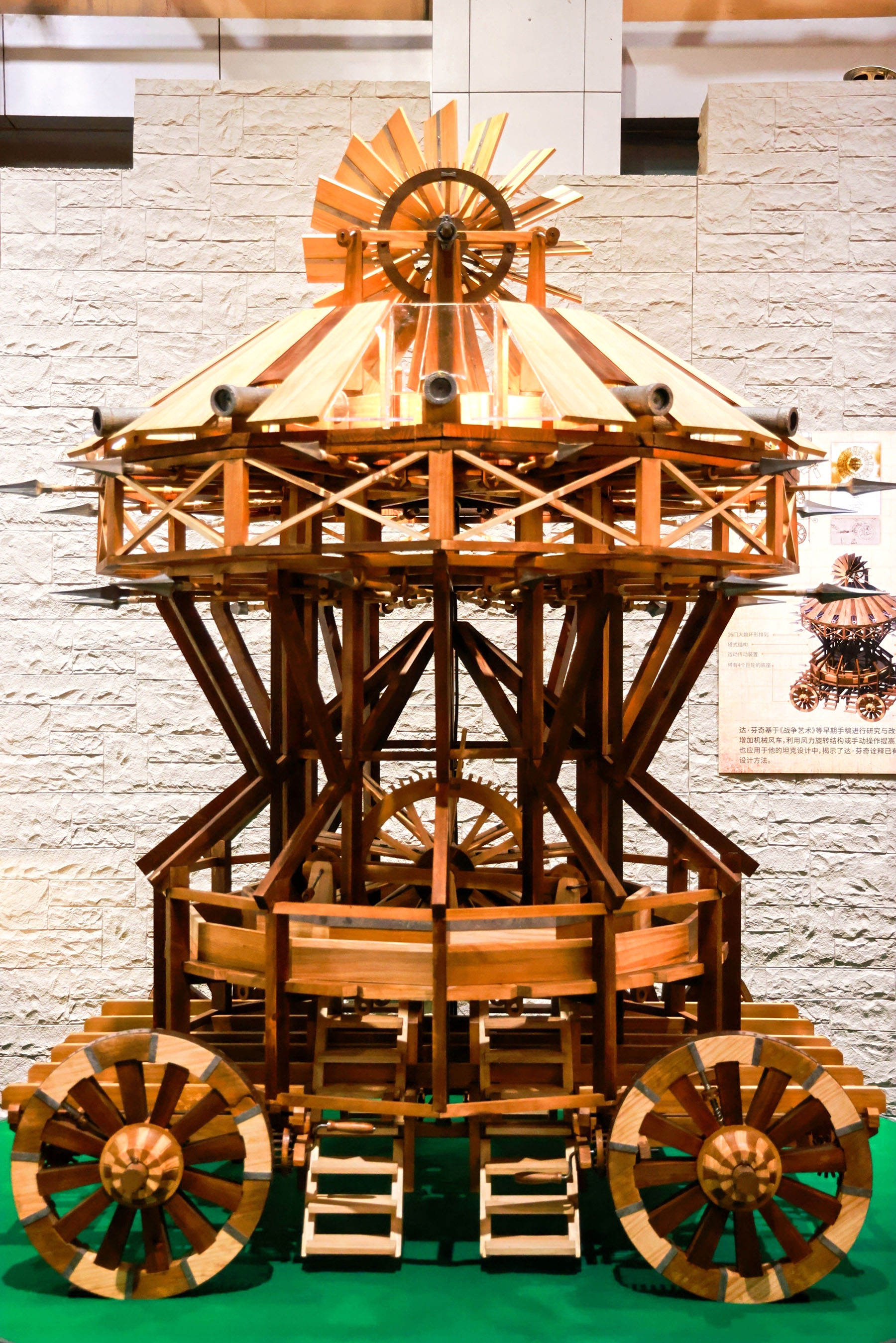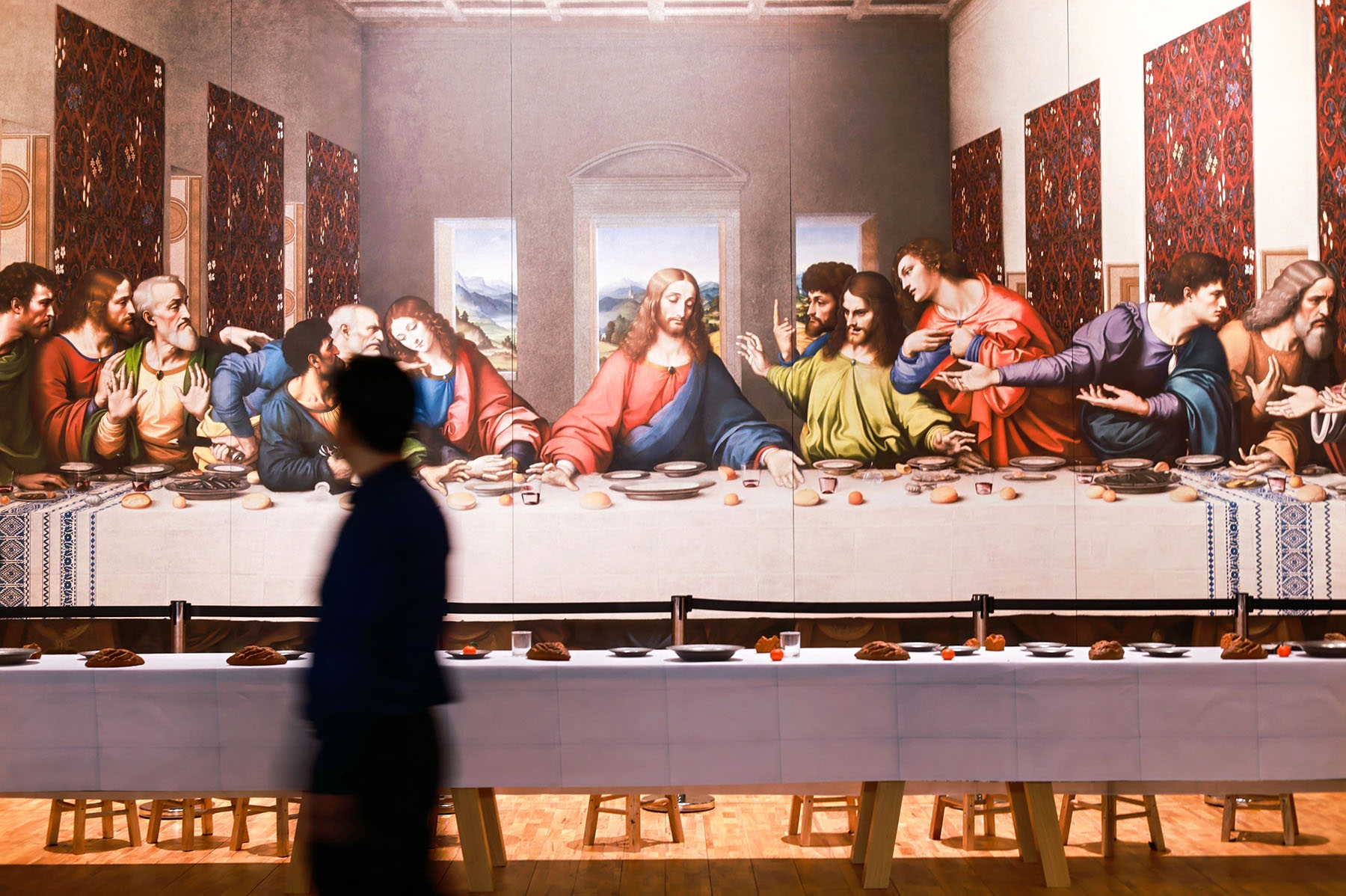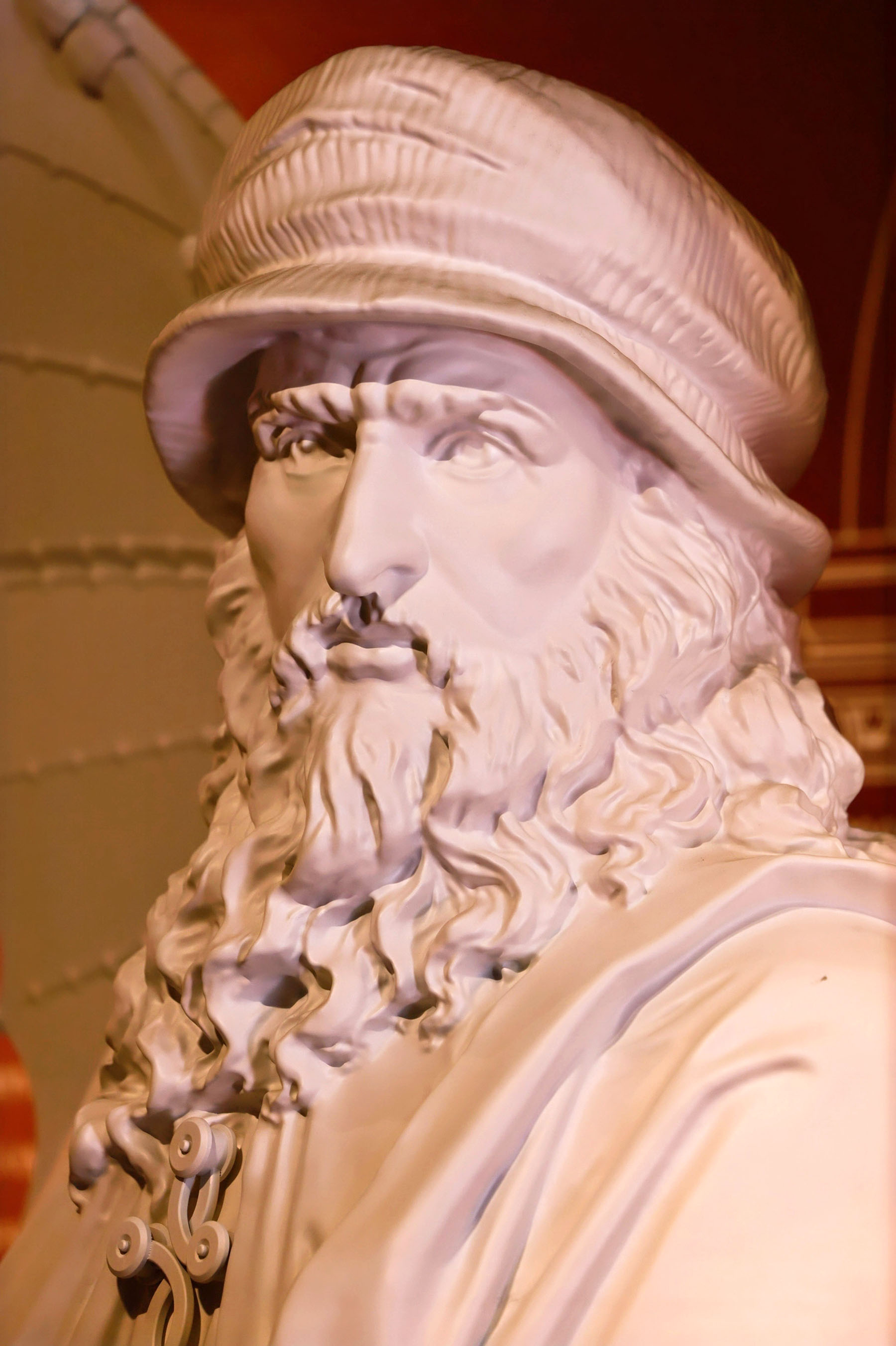Exhibition reveals how Renaissance master drew inspiration from plants, animals, geology and anatomy, Wang Qian reports.

From sketched ideas in the Codex Atlanticus, Leonardo da Vinci's largest collection of documents and drawings, his innovative mind has turned into reality at an ongoing exhibition at the Natural History Museum of China in Beijing, bringing a unique experience fusing the Renaissance genius with natural science to museumgoers.
"Through the exhibition, I hope our children can step into Da Vinci's world to see how he observed nature and, in the future, learn to become a person like Da Vinci or even somehow surpass him. It can spark their curiosity, inspire creative ideas, and encourage them to achieve their own accomplishments," says Miao Yuyan, the museum's exhibition development director, adding that this year marks the 55th anniversary of diplomatic relations between China and Italy.
Opened on June 5, Harmony Through Time and Space: How Leonardo da Vinci Created Concord Between His Artistic and Scientific World and the Natural World will run through Oct 15. Organized by the Natural History Museum of China in collaboration with Italy's Leonardo da Vinci Academy and Guangzhou Artigit Technology Co, under the guidance of the Art Exhibitions China, the exhibition positions natural science as the foundation for understanding Da Vinci's multifaceted brilliance in art, engineering and invention.
READ MORE: Reframing the classics
"With a strong advantage in the collection and research of natural specimens, our museum makes the collaboration with the Leonardo da Vinci Academy a complementary partnership. Featuring a total of about 190 exhibits, the exhibition has more than 70 exquisite specimens from our museum, including animals, plants and minerals, which are all natural objects closely related to the achievements of Da Vinci," Miao adds.

Spanning approximately 1,000 square meters across two temporary exhibition halls, the exhibition is structured into four thematic units comprising eight chapters. It traces how Da Vinci drew profound inspiration from the natural world — studying plants, animals, geology and anatomy — to fuel his revolutionary creations.
Curated by Professor Mario Taddei, founder of the Leonardo da Vinci Academy with more than 20 years of expertise, the exhibition features 23 physical reconstructions based on Da Vinci's designs.
"I think that for the first time with this exhibition, we want to say something extraordinary, something completely new about Da Vinci. He observed nature and researched history. Combining the two, he invented new things," Taddei says, adding that Da Vinci has contributions to a wide range of fields, not only the creation of Mona Lisa.
He adds that the exhibition invites visitors to view the world through Da Vinci's perspective, enter his world, appreciate the beauty of the combination of natural science with humanities and arts, and feel the charm of cross-cultural blend.

A keen observer
Born in Vinci town, Tuscany, Italy, in 1452, Da Vinci did not receive a formal education, and nature became his childhood companion. Always carrying notebooks with him, his manuscripts covered a wide range of subjects — zoology, botany, geography, mathematics, architecture, mechanics, and more — demonstrating his boundless curiosity and continuous observation of the natural world.
Among the many subjects he studied, the possibility of human mechanical flight held particular fascination.
At the exhibition, four reconstructed flying machines that were inspired by the mechanics of bird flight in Da Vinci's manuscripts are on show. They were impossible to replicate in Da Vinci's time.
"Built by teams from China and Italy, we re-created these machines following Da Vinci's notes and designs," Cheng Hailong, one of the curators, says.
At the model of his mechanical flying bat, the team used a mirror as an axis of symmetry to present Da Vinci's complete aircraft design concept in an innovative way, because he drew the left wing of the bat flying machine, which employed rails and ropes for wing-folding.
Nearby on display is another model, inspired by the flight of eagles, in which the pilot can make the wings rotate or bend by operating the pedals and ropes' thrust, while the head and hand controls can manage the spread and closing of the wings and tail.
For Cheng, the reconstructed model of Da Vinci's spherical flying ship is another highlight, which is the earliest form of "hot air balloon". Powered by wind, the ship has a basket for the pilot in the center, like the center of gravity of a gyroscope, that always remains level.
"It reminds me of the Chinese ancient spherical incense burner with fretwork, which has a gimbal that supports the bowl in which aromatics were placed, meaning that the bowl would stay level no matter how the outside sphere rolled," Cheng says.

When East meets West
The spherical flying ship is not the only thing that builds an invisible bridge between the East and the West. At the exhibition, 11 large-scale models of ancient Chinese and Western inventions, sharing similar wisdom and deepening the dialogue between Eastern and Western technological achievements throughout history, made their debut.
"While no direct documentary evidence has been found proving Da Vinci referenced Chinese technology, closer examination reveals striking parallels — his engineering mechanisms, architectural concepts, and weapon designs in the notebooks often mirror ancient Chinese inventions with uncanny similarity," Taddei says.
Devoting his life to the innovative integration of science and art, Da Vinci was deeply influenced by the essence of Renaissance humanism in Europe and may have also been enlightened by Marco Polo's introduction of the ancient wisdom from the East, according to research by Taddei.
Take Da Vinci's self-supporting bridge for example. The structure is made by interlocking wooden beams that form an exceptionally sturdy and durable building. The design concept comes from military usage, allowing armies to swiftly build bridges with tree trunks for river crossings.
Besides the structure, an ancient Chinese wooden arch bridge model is on display. Taddei says several hundred years later, the self-supported bridge was found in Da Vinci's manuscripts.
Not only in the engineering design of bridges and architectural structures, such similarities to ancient Chinese innovations can also be found in the invention of war weapons and mechanical devices.
The exhibition displays Da Vinci's manuscripts with the designs in Wujing Zongyao, a collection of the most important military techniques written in 1044 during the Song Dynasty (960-1279). From the comparison on show, visitors can see that many war machines attributed to Da Vinci were similar to those invented by the Chinese hundreds of years ago before him.
ALSO READ: Mona Lisa's mysterious background decrypted by art-loving geologist
This cross-disciplinary absorption and insight endow his works with a unique charm that transcended intellectual boundaries. All of these have opened up greater possibilities for exploring the exchange and integration of Chinese and Western cultures.
Another exhibit visitors cannot miss is an authentic Da Vinci masterpiece — Face of the Old Lady, dating to around 1490-1510, showcasing a caricatured head and bust of an old woman in profile facing right.
There are six groups of original ancient texts from home and abroad, 74 groups of digitally restored manuscripts, and four groups of digitally restored artworks on display. What's more, The Last Supper, an iconic painting by Da Vinci, was brought back to its former glory in the hall in scale 1:1, and 8 meters wide to show how the painting looked during the artist's lifetime.
Enhancing the scientific narrative, the museum contributes 70 exquisite specimens, being displayed alongside Da Vinci's sketches and reconstructed machines, creating a vivid dialogue between his visions and the natural phenomena that inspired them.
The exhibition leverages technology via mini-programs and interactive stations. Features include puzzle-solving games and DIY digital cultural creation activities, designed to deepen engagement, contextualize knowledge, and make learning dynamic — particularly for young audiences.
Contact the writer at wangqian@chinadaily.com.cn


